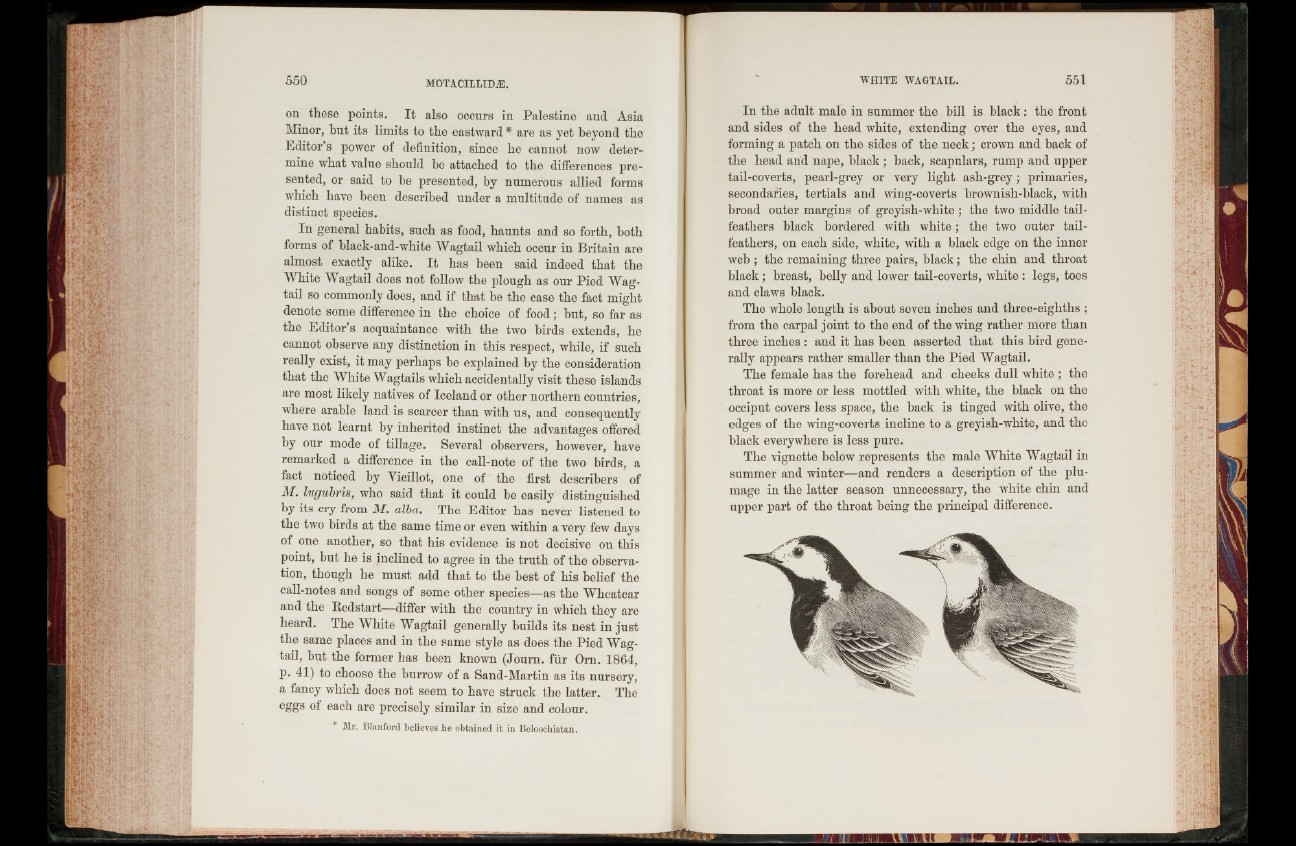
on these points. I t also occurs in Palestine and Asia
Minor, but its limits to the eastward * are as yet beyond the
Editor’s power of definition, since he cannot now determine
what value should be attached to the differences presented,
or said to be presented, by numerous allied forms
which have been described under a multitude of names as
distinct species.
In general habits, such as food, haunts and so forth, both
forms of black-and-white Wagtail which occur in Britain are
almost exactly alike. I t has been said indeed that the
White Wagtail does not follow the plough as our Pied Wagtail
so commonly does, and if that be the case the fact might
denote some difference in the choice of food; but, so far as
the Editor’s acquaintance with the two birds extends, he
cannot observe any distinction in this respect, while, if such
really exist, it may perhaps be explained by the consideration
that the White Wagtails which accidentally visit these islands
are most likely natives of Iceland or other northern countries,
where arable land is scarcer than with us, and consequently
have not learnt by inherited instinct the advantages offered
by our mode of tillage. Several observers, however, have
remarked a difference in the call-note of the two birds, a
fact noticed by Vieillot, one of the first describers of
M. lugubris, who said that it could be easily distinguished
by its cry from M. alba. The Editor has never listened to
the two birds at the same time or even within a very few days
of one another, so that his evidence is not decisive on this
point, but he is inclined to agree in the truth of the observation,
though he must add that to the best of his belief the
call-notes and songs of some other species—as the Wheatear
and the Redstart—differ with the country in which they are
heard. The White Wagtail generally builds its nest in just
the same places and in the same style as does the Pied Wagtail,
but the former has been known (Journ. flir Orn. 1864,
p. 41) to choose the burrow of a Sand-Martin as its nursery,
a fancy which does not seem to have struck the latter. The
eggs of each are precisely similar in size and colour.
Mr. Blanford believes he obtained it in Beloochistan.
•
In the adult male in summer the bill is black : the front
and sides of the head white, extending over the eyes, and
forming a patch on the sides of the neck; crown and back of
the head and nape, black; back, scapulars, rump and upper
tail-coverts, pearl-grey or very light ash-grey; primaries,
secondaries, tertials and wing-coverts brownish-black, with
broad outer margins of greyish-white ; the two middle tail-
feathers black bordered with white; the two outer tail-
feathers, on each side, white, with a black edge on the inner
web ; the remaining three pairs, black; the chin and throat
black ; breast, belly and lower tail-coverts, white : legs, toes
and claws black.
The whole length is about seven inches and three-eightlis ;
from the carpal joint to the end of the wing rather more than
three inches : and it has been asserted that this bird generally
appears rather smaller than the Pied Wagtail.
The female has the forehead and cheeks dull white ; the
throat is more or less mottled with white, the black on the
occiput covers less space, the back is tinged with olive, the
edges of the wing-coverts incline to a greyish-wliite, and the
black everywhere is less pure.
The vignette below represents the male White Wagtail in
summer and winter—and renders a description of the plumage
in the latter season unnecessary, the white chin and
upper part of the throat being the principal difference.